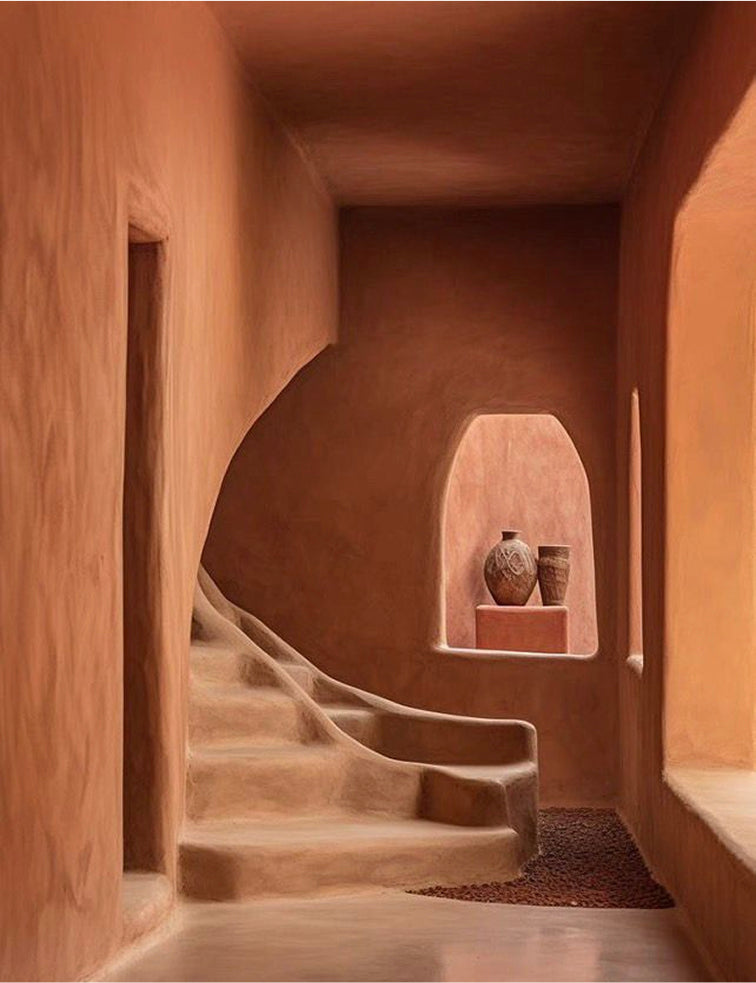Article: Weaving Mastery: The Art of Moroccan Weaving

Weaving Mastery: The Art of Moroccan Weaving
Woven by hand. Rooted in mountains. Passed through generations.
Moroccan weaving carries memory, matter, and quiet power.
There’s something deeply moving about watching a rug come to life on a loom. In the Atlas Mountains, where the rhythm of life is guided by nature, weaving is not just a craft — it is a language spoken only by women. Their hands translate stories, emotions, and heritage into thread. Each rug is both an artwork and a diary, woven with intention and patience, carrying the soul of the woman who made it.
An Art Carried by Women
In Morocco, weaving is a women’s art — one that binds generations together. The atelier is often found beside the weaver’s home, or just a short walk from her children’s school. This closeness allows her to move seamlessly between her roles: artist, mother, homemaker. Around midday, she steps away from her loom to prepare lunch for her children; when they’re back at school, she returns, baby by her side, to continue weaving the day’s story into wool.
Weaving has long been the creative language of Berber women — a form of expression deeply tied to domestic life, heritage, and identity. Historically, in Amazigh (Berber) society, gender roles were defined not by hierarchy but by balance. Men were often shepherds, farmers, or traders, spending much of their time outside the home, while women were the guardians of the household and transmitters of culture. Within that space, weaving became their medium — a quiet art of storytelling through thread, a way to preserve memory, beauty, and identity within the fabric of daily life.
This balance between care and creation is what gives Moroccan rugs their warmth. They are born not in factories, but in living spaces — surrounded by laughter, children’s footsteps, and the murmur of women working together.
Flair’s Collaboration with the Atlas
At Flair, we are proud to work with women artisans in the Khenifra region of the Middle Atlas. We collaborate closely with three weaving centers that carry on this precious heritage. In one of them, nine looms line the room, each shared by two or three women. The space hums softly — whispers, smiles, and the steady, rhythmic hammering of the metal comb as it secures each knot. A curious little boy wanders between the looms; a baby sleeps nearby. Life and art intertwine.
The weavers rely on little more than a small picture of the design. Their true guide is instinct — an inherited understanding passed down from Berber mothers and grandmothers. Each knot, each line, each imperfection reflects their intuition and grace. The wool they use is raw, hand-spun, and hand-dyed, connecting them to the land that nourishes it.
Beni M’rirt and Zanafi: Heritage Woven in Wool
Among the many rug types that Morocco is known for, Flair focuses on two exceptional ones: Beni M’rirt and Zanafi.
Beni M’rirt rugs originate from the Middle Atlas region. They are known for their incredible softness, luxurious texture, and dense pile. Each one is handwoven from fine wool, often in neutral tones that enhance the play of light and shadow across their surface. Their minimalist geometric patterns speak to both ancient Berber symbolism and contemporary elegance — a perfect bridge between tradition and modern interiors.
Zanafi rugs, on the other hand, come from the High Atlas, around the region of Ouarzazate. Unlike the plush Beni M’rirt, Zanafi rugs are flat-woven with striking, reversible designs. They often feature bold, linear motifs in black and white, expressing a more graphic and architectural sensibility. Every knot and weave tells of the Zanafi women’s strength, precision, and artistry.
The Process: Weaving With Women in the Atlas Mountains
Creating a Moroccan rug is a slow, intricate process — one that resists haste. Each rug is made entirely by hand, from spinning and dyeing the wool to knotting and washing.
Once woven, the rugs travel to the river valley in Khenifra, where they are washed over and over again with pure water, brushed with brooms, and finally hung to dry under the sun. On rainy autumn days, this process can take weeks. There are no shortcuts — only patience and care.
The sight of finished rugs drying by the river is unforgettable: soft woollen artworks hanging in the open air, glistening under the sun. Each one holds traces of the hands, hearts, and hours that shaped it.
The Beauty of Human Hands
In a world where everything seems to appear at our doorstep overnight, it’s easy to forget how much time and touch go into creating something meaningful. Moroccan rugs remind us of that — of the value of slowness, imperfection, and humanity.
Every piece carries a story: of a mother weaving with her child beside her, of generations of women keeping their traditions alive, of landscapes that lend their colours to wool.
These rugs are worth the time, the wait, and the investment. They are not just home décor — they are living, breathing expressions of artistry and devotion.
At Flair, we celebrate that mastery — and the women behind it.

